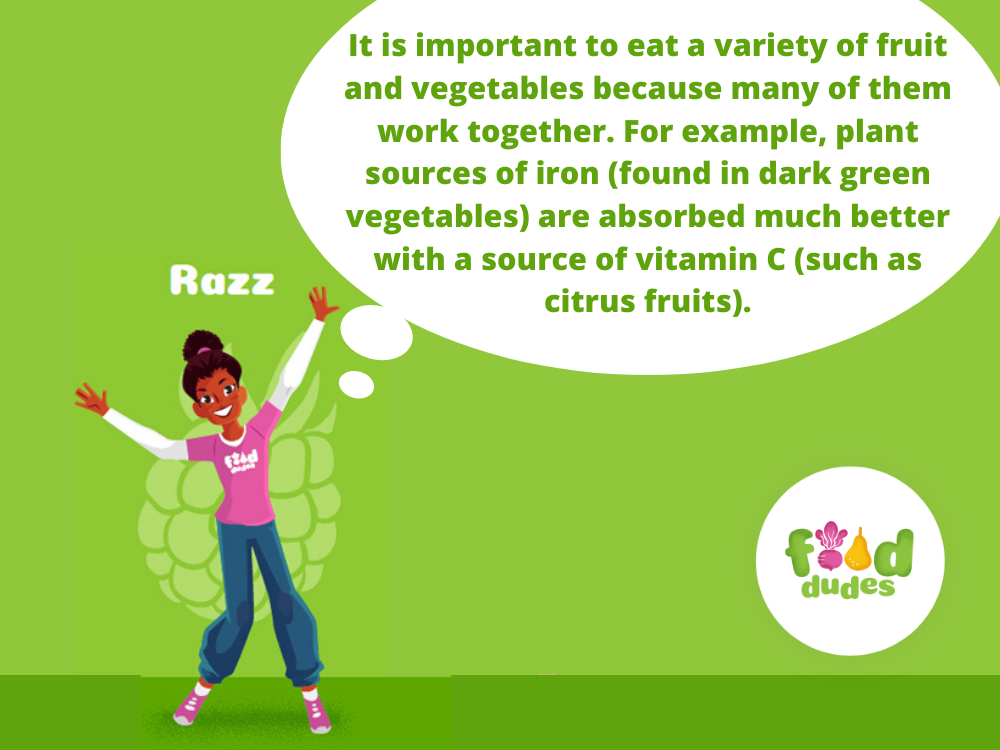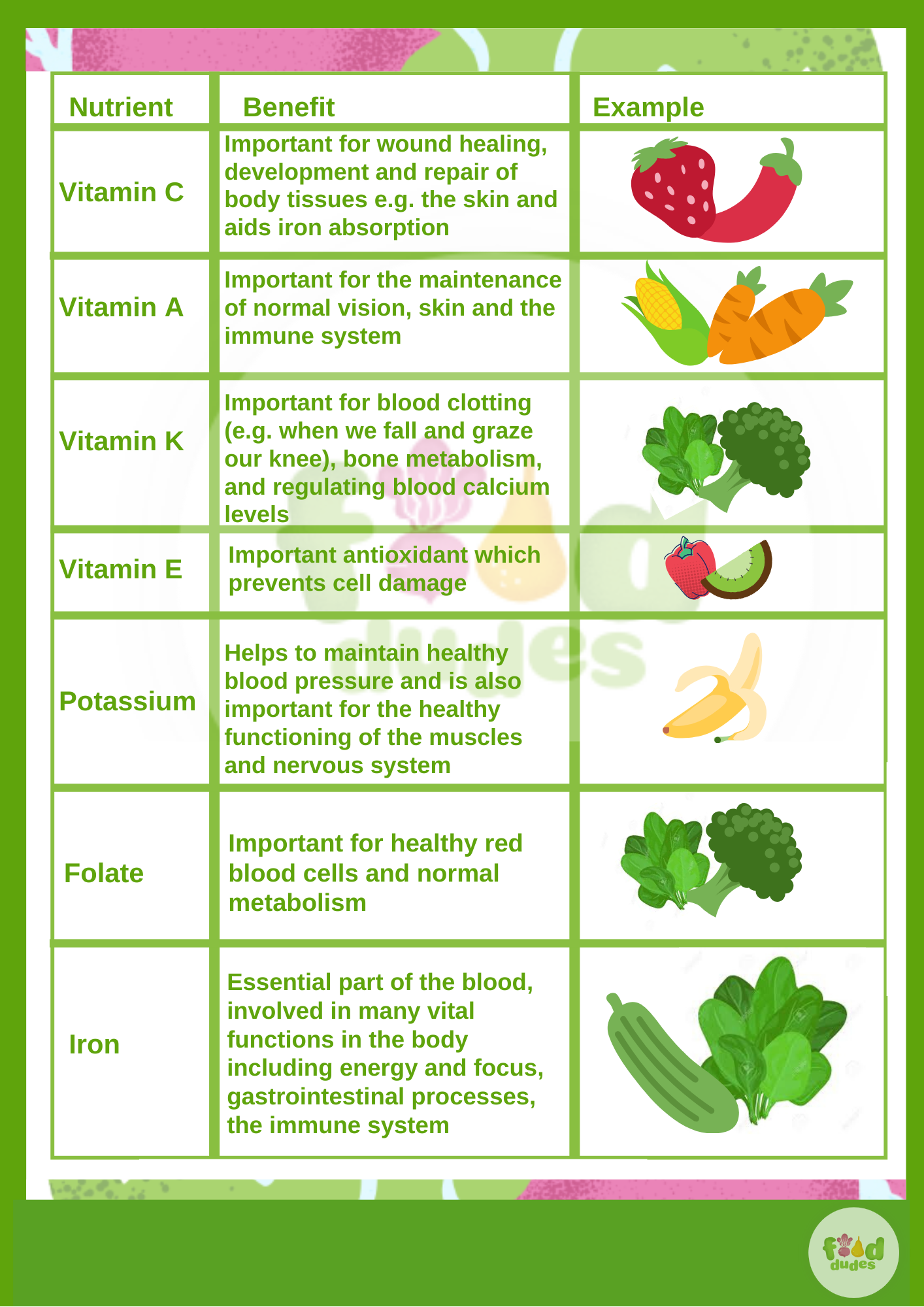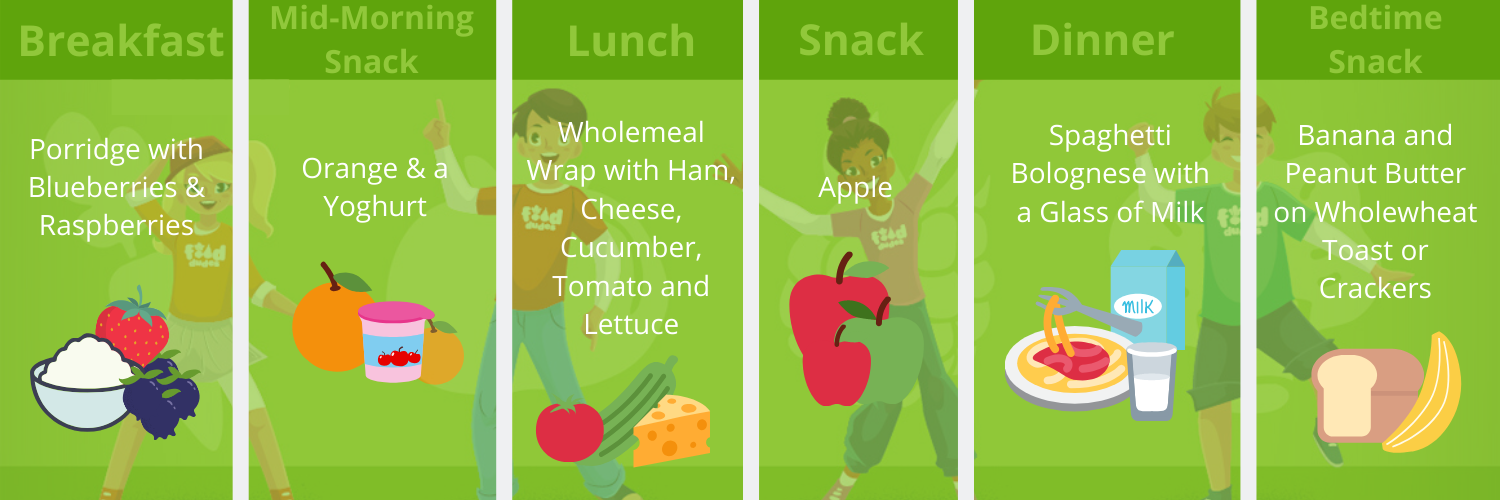Fruit and vegetables are an important part of a healthy, balanced diet, as they are good sources of fibre, as well as having lots of essential vitamins and minerals and other substances such as phytochemicals which are known to have a protective effect on the body.
Eating lots of fruit and vegetables can help you to keep a healthy weight as they are naturally low in fat. Scientific evidence suggests that having 5-7 portions a day may reduce your risk of many diseases.
Variety is important! Different types and colours of fruits and vegetables contain different combinations of important nutrients, which our bodies need to stay healthy. So, to get the most benefit out of them, try to have a wide variety of fruits and vegetables from each of the colour groups – red, orange, yellow, green, purple, blue and white.
Fruit and vegetables can be prepared in many different ways. They can be eaten raw or cooked, fresh or frozen, and even tinned in their natural juices. They can also be added to smoothies, which can be delicious. Fruit and vegetables are better eaten whole because they are more filling and provide more fibre.
A Rainbow of Nutrients
Red
Red fruit and vegetables such as tomatoes contain an antioxidant called lycopene which gives them their red pigment. Lycopene is an important antioxidant that may help protect against heart disease and some cancers. Strawberries and red peppers are also rich sources of vitamin C which is important for skin, wound healing and immune function.
Orange/ Yellow
Orange fruit and vegetables are high in carotene which is a form of Vitamin A, this keeps our eyes healthy and also contributes to a healthy immune system. Carrots, butternut squash and sweet potato are good sources; that’s why we often hear that carrots help us to see in the dark! Yellow fruit and vegetables like sweetcorn, peach and papaya are also rich in vitamin A. Bananas are rich in potassium, read on to see why potassium is important for our bodies.
Green
Chlorophyll is a pigment that gives green fruit and vegetables their vibrant colour. Green vegetables contain a range of important chemicals that may protect against blood-vessel damage and certain cancers. Dark green leafy green vegetables such as spinach, kale and broccoli are rich sources of folate, vitamin E and iron. Vitamin E is another important antioxidant which protects our cells from damage.
Blue/Purple
Anthocyanins are antioxidants that give blue and purple foods their distinctive colour, this antioxidant protects cells against damage and may reduce the risk of various diseases including cardiovascular disease. Foods rich in anthocyanins include blueberries, beetroot, red cabbage and purple grapes.
White and Beige/Light Brown
White and light brown fruit and vegetables contain important disease-fighting phytochemicals which promote heart health, and strengthen the immune system. These foods are particularly high in fibre, which keeps us fuller for longer and keeps everything moving in our digestive system. Such foods include onions, cauliflower, parsnips, garlic, mushrooms and potatoes.

Fun Fact: Did you know?


How to incorporate the rainbow into your child's diet?

For some recipe inspiration packed full of fruit and vegetables check out Bord Bia's dedicated recipe page!

